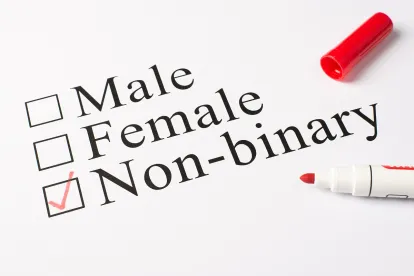As 2021 comes to an end, many employers are preparing to meet record and reporting obligations. For employers with 100 or more employees who are required to file the EEO-1 Component 1 Report (EEO-1 Report) annually, this may involve ensuring that the relevant personnel information is accurate. While the annual deadline for submitting the EEO-1 Report is typically March 31 (subject to change and extension), employers must generally choose a “snapshot” period for their EEO-1 Report by selecting one pay period in the fourth quarter of the relevant survey year (i.e., the year prior to submission). One issue related to reporting obligations that has arisen in recent years is how to properly report employee with non-binary genders on the EEO-1 Report.
To provide background, the EEO-1 Report requires that employers report their annual workforce data, organized by location, job category, race/ethnicity, and gender. In the past, the Equal Employment Opportunity Commission (EEOC) provided employers with two options for reporting an employee’s gender on the EEO-1 Report: male or female. However, as more employers strive for LGBTQIA+ inclusion and gender inclusivity in their workplaces, reporting of employees’ gender has posed some questions for employers, especially in light of recent state laws. These laws include allowing individuals to designate a non-binary gender marker on government documents such as driver’s licenses and requiring that employers recognize a non-binary employee’s preferred gender markers, among other things. Some states, such as California, expressly require that employers report non-binary employees in order to comply with state reporting obligations such as filing of pay data reports. In 2019, the EEOC released guidance which advises that employers may choose, but are not required, to report non-binary genders in the comment box on the Certification Page in the EEO-1 Report by prefacing the data with the phrase “Additional Employee Data.” With that option, employers can account for non-binary genders on the EEO-1 Report.
Based on this guidance, and in light of changes to various state laws, employers may wish to revise their voluntary self-identification forms by providing employees with non-binary options for self-identification. This change could increase the likelihood that employees will provide accurate responses, promote gender inclusivity, and avoid inconsistencies in data and information in light of the fact that employees may possess state-issued government identification documents that indicate a non-binary gender choice.
This week’s post was co-authored by Robinson+Cole Labor and Employment Group lawyer Emily A. Zaklukiewicz.



 />i
/>i
